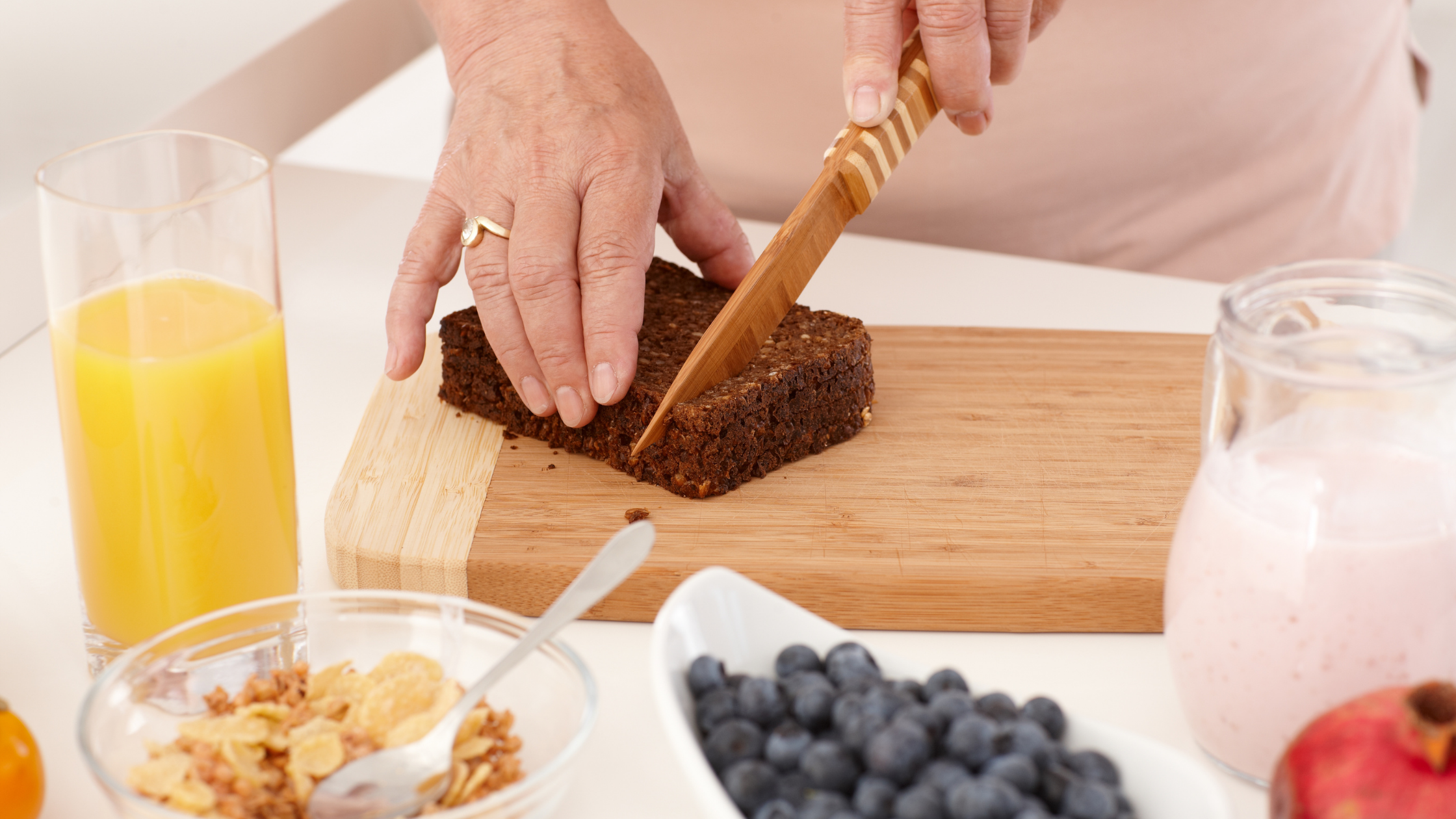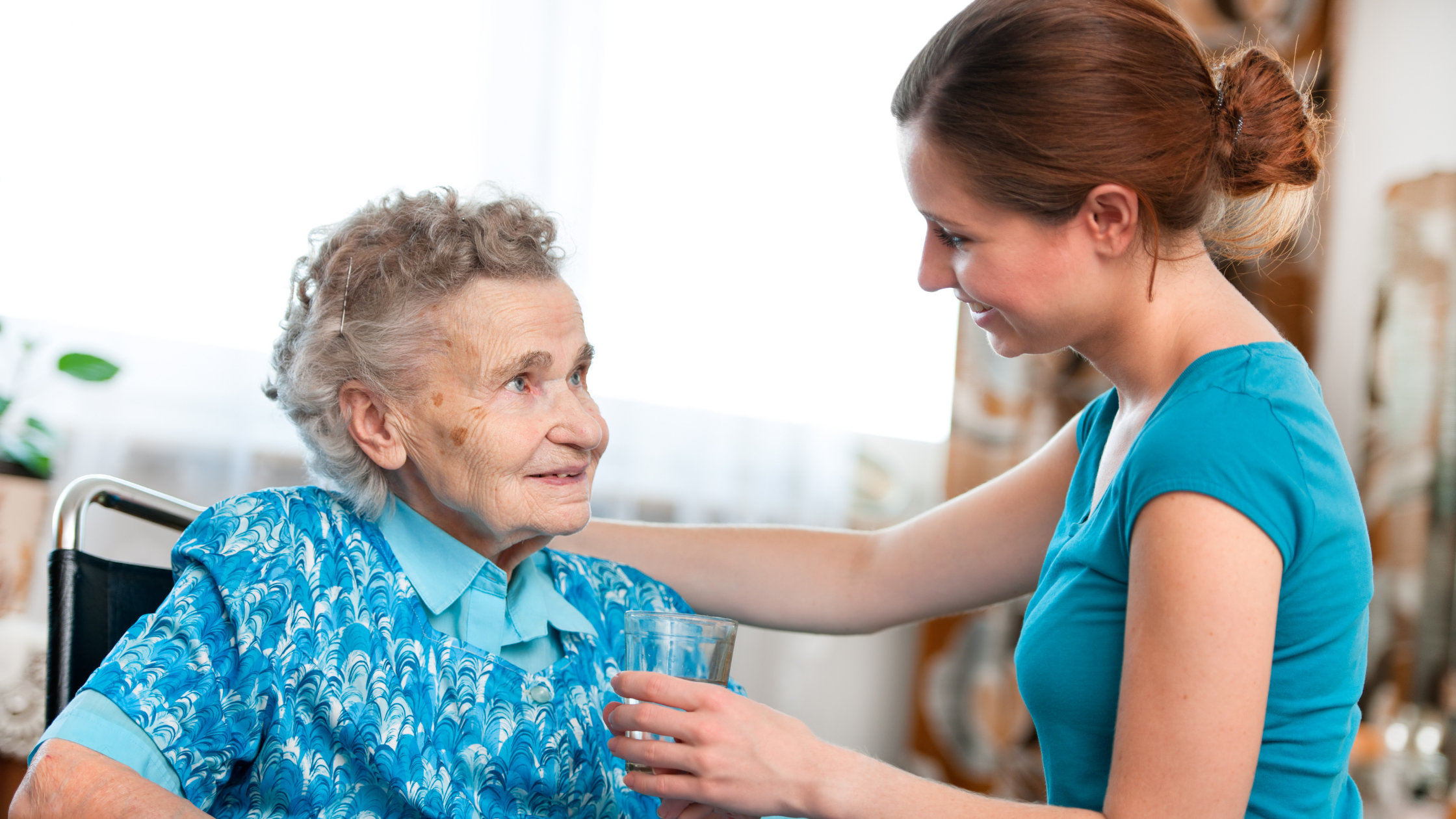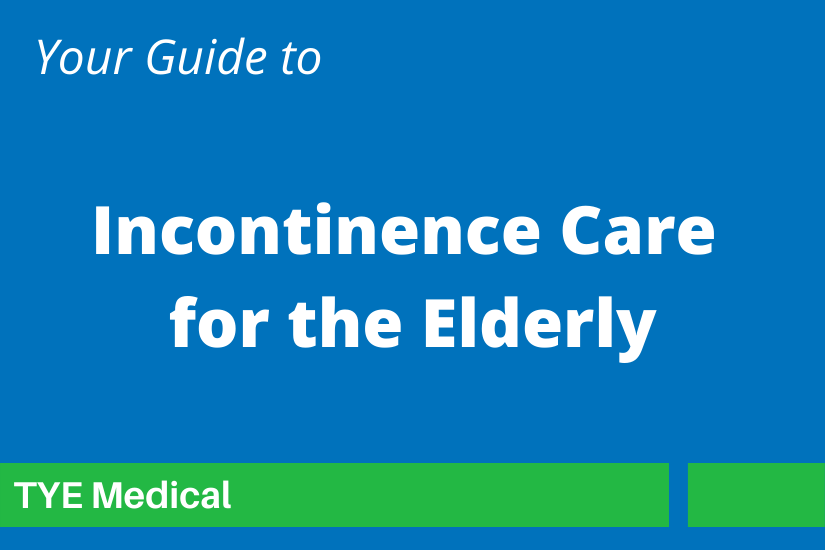Guide to Incontinence Care for Elderly Loved Ones
What Is Incontinence?
Urinary incontinence is a symptom, not a disease, and is described as an involuntary loss of urine. Many underlying conditions can lead to bladder leaks, and your loved one’s doctor can help determine possible causes.
Common incontinence causes include:
- Weakened pelvic floor due to childbirth or prostate surgery
- Medications that weaken bladder muscles
- Diseases that affect bladder nerves (MS, Parkinson’s, diabetes)
- Being overweight (weakens bladder muscles)
- Cognitive disorders (Alzheimer’s, other dementias)
- Enlarged prostate
- Prostate cancer
How Do I Provide Incontinence Care for the Elderly?

Whether you’re new to incontinence care or a veteran looking for encouragement, it’s helpful to seek support from caregiver groups or online resources. Here are some tips and best practices to keep in mind as you provide incontinence care for your elderly loved one.
Be Compassionate
It’s much easier to offer care to a cooperative patient. Your loved one will be less compliant and appreciative if they sense indifference or a dismissive attitude. Remember that they’re a person with thoughts and feelings, and then put yourself in their shoes. Consider how you would want someone to treat you if you were them.
This can help you keep an element of humanity in your caregiving because it’s so easy to get caught up in the process and become distracted by a mental checklist.
Keep an Eye on Food and Fluid Intake
Many common foods and drinks can trigger incontinence or aggravate bladder problems. Watch what your loved one eats and drinks to help them avoid the following bladder irritants:
- Too many fluids
- Too little fluids
- Caffeine (coffee, tea, soda)
- Carbonated beverages (even without caffeine, i.e., sparkling water)
- Spicy foods
- Acidic fruit juices (orange juice, grapefruit juice)
- Chocolate
- Alcohol
- Tomatoes and tomato-based products
For a complete list, refer to the National Association for Continence’s article.
You can stock the refrigerator and cabinets with foods and drinks that are more bladder friendly and find ways to encourage drinking adequate amounts of hydrating liquid.
Remember that trigger foods don’t bother everyone. If some of these foods and beverages are part of your loved one’s regular diet, try removing them or reducing them one at a time to see if symptoms improve.
Follow a Bathroom Schedule
If you adopt a bathroom schedule as part of your urinary incontinence care plan, you can get ahead of urine leaks. A daily routine is good for elderly patients, especially if they have dementia or Alzheimer’s. Schedules put them at ease and reduce the time between bathroom trips, which is crucial since they sometimes don’t realize they need to go until too late.
This is especially important for those with neurogenic bladder (bladder nerve damage) and functional incontinence. Functional incontinence happens when physical disabilities (immobility) or cognitive impairment (dementia) interfere with normal voiding.
Experiment to determine what schedule works best for their needs.
Waterproof Key Areas
Accidents happen, even with bathroom schedules and reliable incontinence products. That’s why it’s helpful for you and your loved one if you use waterproof pads and other essentials to protect furniture. It’s easy to throw clothing and bedding into the wash, but what about mattresses and chair cushions?
Read this article from Daily Caring for tips on waterproofing bedding. You can also search Amazon.com for sofa covers, seat protectors, and furniture covers.
Choose Easy-to-Change Clothing
You can reduce accidents if you and your loved one can remove clothing quickly enough to void when needed. You can opt for pants with an elastic waistband rather than buttons, zippers, or ties.
If your loved one has Alzheimer’s or dementia, they might remove their clothing at inappropriate times. In these cases, you can provide back-zip jumpsuits that allow you to quickly assist them for bathroom purposes while keeping them from removing their own clothing.
Practical Tips for Incontinence Care

We’ve discussed some essential tips for managing incontinence symptoms. But how do you properly handle leaks and prepare for them? Here is some practical advice to help you provide the best care for your loved one.
Change Soiled Incontinence Products Promptly
The longer your loved one wears a soiled pad or underwear, the more likely they will develop infections and skin problems like incontinence dermatitis. This is especially important if your patient is diabetic and prone to infections.
This means that you’ll need to change products as soon as possible after soiling. And if your loved one has dementia or Alzheimer’s, you might not be able to take their word for it. Through no fault of their own, they might not be honest with you when you ask the question. In such cases, it’s best to check for yourself. You’ll eventually learn how often they void and when to check-in.
Remember that if they eat or drink more than usual or their schedule has been disrupted, you’ll probably need to adjust their changing schedule.
Keep Them Dry at Night
You can accomplish this by limiting fluid intake one to two hours before bedtime. They might need to sip some water, but most of their hydration should happen earlier in the day. And they should avoid caffeine and other diuretics at least six hours before bedtime.
The next most important step is to purchase the right nighttime incontinence products. Pay attention to how much they wet at night and prepare for the heaviest nights. Not all nighttime incontinence underwear will last through the night. It depends on individual needs and absorbency levels.
It’s best to couple incontinence underwear or briefs with an insert pad that won’t pass the liquid through to the protective underwear or brief. This will ensure your loved one has enough absorbent and waterproof protection to get them through the night.
For more information, read about our two-piece system for maximum, cost-effective protection and then shop our most absorbent products, like:
Clean Up Properly
Here is a hygienic guide to cleaning up after your incontinent loved one:
- Wear disposable gloves
- Wipe from the front toward the back only (especially important for female patients)
- Wash the skin with sanitary cleansing wipes or a gentle rinse-free skin cleanser
- Pat dry
- Apply a moisturizing barrier cream
For additional incontinence care accessories, shop our online store for helpful items.
What Are the Types of Incontinence?

Once you gain experience managing and handling incontinence care, you can start learning more about your loved one’s condition. There are many types of incontinence with different triggers and tips for managing.
Here is an overview to get you started in your research:
Stress Incontinence
It’s considered stress incontinence when the bladder leaks during coughing, sneezing, laughing, or physical activity (like exercise). It’s most common in middle-aged women and is primarily due to weakened pelvic floor muscles. Pregnancy and delivery can strain and weaken these muscles, which means less support for the bladder and increased pressure.
Urge incontinence
This type of incontinence happens when there is a sudden urge to void with little warning. It’s usually due to overactive detrusor muscles often related to neurologic conditions (like a stroke or MS), urinary tract infections, and cancer. People with this condition frequently can’t make it to the bathroom in time to void.
Overflow Incontinence
This happens when the bladder is overdistended or overstretched, which is often due to incomplete emptying. Some causes typically include chronic urinary retention, which weakens the bladder muscles and diminishes the urge to go. It’s more common in men and often leads to dribbles and leaks.
For more information, read our article Overflow Incontinence Treatment: What to Do About This Common Male Bladder Condition.
Mixed incontinence
People with this type of incontinence experience symptoms of both stress incontinence and urge incontinence. It occurs if there are two underlying causes of leaky bladder, like a weakened pelvic floor (stress incontinence) and compromised bladder nerves or muscles (urge incontinence).
Bowel Incontinence
This condition means that stool passes involuntarily. The two main types are passive fecal incontinence and urge fecal incontinence. The passive type is due to a poorly functioning sphincter muscle, and the person is unaware that stool is being passed. Urge fecal incontinence is often caused by weakened pelvic floor muscles, muscle injury, or nerve damage. For more information about bowel incontinence and what makes it so difficult to manage, check out our article What Type of Bowel Incontinence Products do I Need?
Functional Incontinence
When there is cognitive or mobility impairment that prevents someone from recognizing the need to go, knowing what to do about the urge, or getting to or using the toilet, it’s considered functional incontinence. This can cause both urinary and bowel leakage.
Products for Every Type of Incontinence Delivered for Free

Regardless of the type of incontinence or severity, TYE Medical offers the right size, fit, and absorbency level with comfort and convenience.
Shop our online store for light to heavy incontinence, overnight products, and all the supplies you need to keep your loved one healthy and dry. You’ll enjoy our FREE, discreet shipping on ALL orders with no minimum purchase required.


